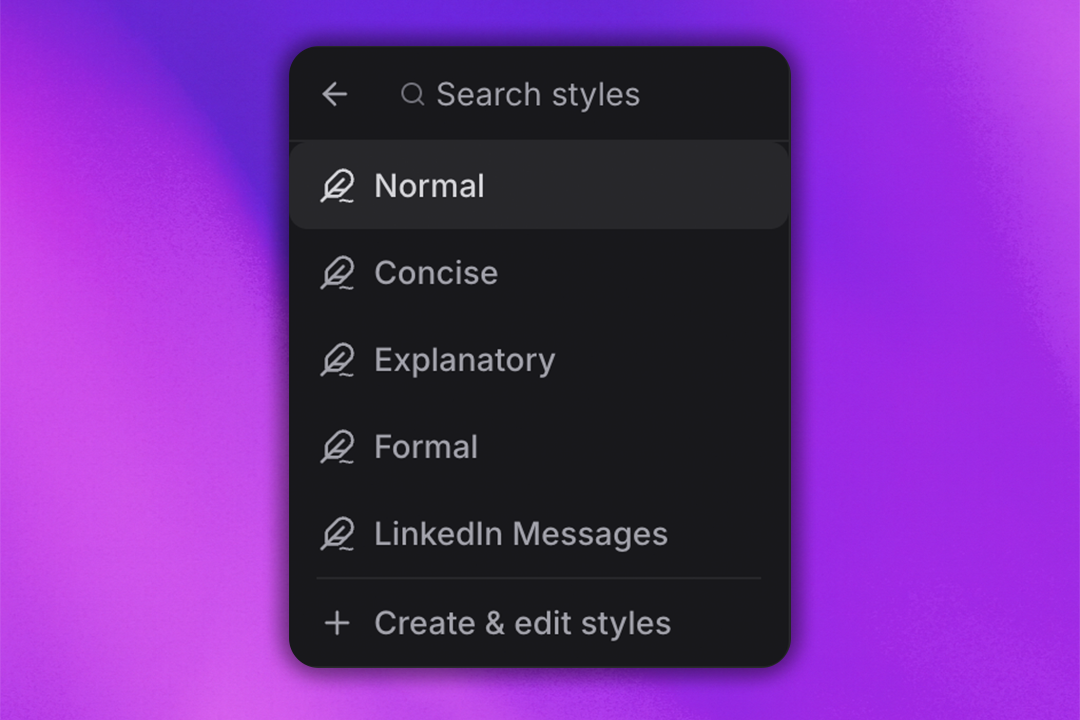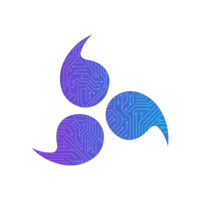Writing Styles


Jack Phelps
CRO
Writing styles in Artifact allow you to customize how your AI assistant communicates, helping you achieve more while working in a way that feels natural to you. Whether you prefer concise responses for quick tasks or detailed explanations for learning, Artifact adapts to your communication preferences.
This comprehensive guide explores how to configure and use Artifact's writing styles feature, from preset options to creating fully custom communication patterns that match your unique voice and workflow.
Understanding Writing Styles
Writing styles are powerful personalization tools that shape how Artifact responds to your prompts and questions. Instead of receiving generic responses, you can configure Artifact to communicate in ways that match your professional needs, learning preferences, or personal communication style.
Think of writing styles as communication templates that influence tone, length, structure, and complexity of Artifact's responses. Whether you're conducting research, writing content, coding, or brainstorming, the right style can dramatically improve your productivity and satisfaction.
Using Preset Styles
Artifact comes with four carefully crafted preset styles designed to cover the most common communication needs. These styles provide an excellent starting point for customizing your AI experience.
Selecting a Style
To select a writing style in Artifact:

- Click the "Search and tools" menu in the lower left corner of the chat interface
- Select "Use style" from the available options
- Click one of the four available preset styles in the menu
- Artifact will immediately adapt its responses according to your selected style
Style Flexibility
You can switch between styles at any time during your conversation. Artifact will use your current style selection for new messages, message edits, and retries, giving you complete control over the communication flow.
Available Preset Styles
Normal: The default response style from Artifact. Balanced, comprehensive, and professional - perfect for general use cases and when you want Artifact's natural communication style.
Concise: Shorter and more direct responses. Ideal for quick questions, when you need rapid answers, or when working on time-sensitive tasks that require efficiency over explanation.
Formal: Clear and polished responses with professional tone and structure. Perfect for business communications, official documents, or when you need responses suitable for formal contexts.
Explanatory: Educational responses designed for learning new concepts. Includes detailed explanations, examples, and context - excellent for research, learning, and when you need comprehensive understanding.
Managing Preset Styles
Artifact allows you to customize which preset styles appear in your menu, helping you streamline your workflow by showing only the styles you regularly use.
To customize your preset style menu:
- From the "Use style" dropdown, click "Create & edit styles"
- Select the preset style you want to hide from the "Customize your styles" modal
- Click "Options" in the top-right corner
- Select "Hide preset style"
- To unhide preset styles, click "Reset preset styles" in the bottom right corner
Core Styles Always Available
While you can hide most preset styles, the Normal and Concise styles will always remain visible in your menu to ensure you always have basic style options available.
Creating Custom Styles
For more personalized communication, Artifact enables you to create custom styles that perfectly match your unique needs, preferences, and workflow requirements. There are two powerful methods for creating custom styles.
Method 1: Upload Writing Samples
The most effective way to create a custom style is by providing Artifact with examples of your preferred writing. This method allows Artifact to analyze your communication patterns and create a matching style.
- From the "Use style" dropdown, click "Create & edit styles"
- Click "Create custom style"
- Select "Add Writing Example" to choose between uploading a file from your device or pasting text content directly
- Click "Create style"
- Artifact will analyze your writing and generate a matching style

Your writing samples help Artifact understand and match your preferred communication approach. You can upload documents in various formats including PDF, DOC, and TXT files. The more representative your samples are of your desired communication style, the better Artifact can replicate it.
Method 2: Describe Your Style
If you prefer to describe your ideal communication style rather than provide examples, Artifact offers a guided approach to style creation.
- From the "Use style" dropdown, click "Create & edit styles"
- Click "Create custom style" in the bottom left corner
- Choose "Describe style instead"
- Select a starting point that best matches your goal
- For advanced users, click "Use custom instructions (advanced)" to provide specific style instructions that Artifact will follow exactly
- Click "Generate style"
Artifact will use your selected starting point and descriptions to create an effective custom style. The advanced custom instructions option gives you precise control over how Artifact should communicate in your custom style.
Managing Your Custom Styles
Once you've created custom styles, Artifact provides comprehensive tools for organizing, editing, and optimizing them to perfectly fit your workflow.
Organization and Management
From the "Use style" dropdown, click "Create & edit styles" to access organization features:
- Reorder styles using the drag icon (:::) next to each style to prioritize your most-used styles
- Organize styles by frequency of use, project type, or communication context
Style Editing and Optimization
From the "Create & edit styles" modal, click into individual styles to access advanced management options:
- Rename styles by clicking into the style name or using the options menu
- Preview how the style affects Artifact's responses before applying it to important conversations
- Delete styles you no longer need through the options menu
- Edit style instructions to fine-tune Artifact's responses and improve communication quality
- Choose between AI-assisted editing ("Edit Style") or manual instruction editing ("Set Instructions Manually") through the options menu
Tips for Success
To maximize the effectiveness of your writing styles and create the best possible communication experience with Artifact, consider these proven strategies:
Be Specific and Detailed
When describing your desired communication style, provide specific details about tone, structure, vocabulary level, and response length. Instead of "professional," specify "formal business tone with structured paragraphs and industry-specific terminology."
Test and Iterate
Always use the preview feature to test your styles before applying them to important conversations. This allows you to refine and adjust the style until it perfectly matches your expectations and needs.
Context-Based Style Selection
Switch between styles based on different conversation needs. Use Formal for business communications, Explanatory for learning sessions, Concise for quick tasks, and your custom styles for specialized workflows or projects.
Consider Your Audience
When creating styles for content that will be shared with others, consider your target audience's preferences, expertise level, and communication expectations. Create styles optimized for your team, clients, or specific user groups.
Advanced Style Strategies
For power users looking to maximize their productivity with writing styles, consider these advanced approaches:
Project-Specific Styles
Create dedicated styles for specific projects or clients. Include project-specific terminology, preferred formats, and communication guidelines to ensure consistency across all project-related interactions.
Role-Based Communication
Develop styles that match different professional roles or scenarios - such as "Executive Summary" for leadership communications, "Technical Documentation" for developer audiences, or "Educational Content" for training materials.
